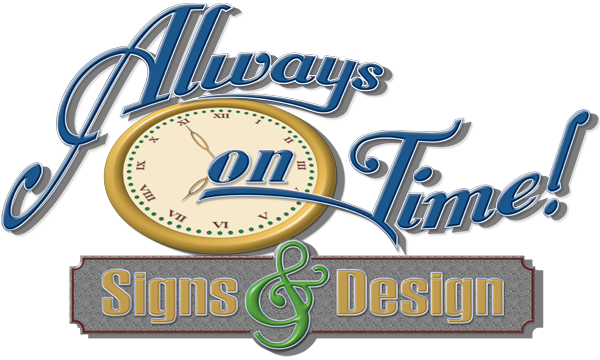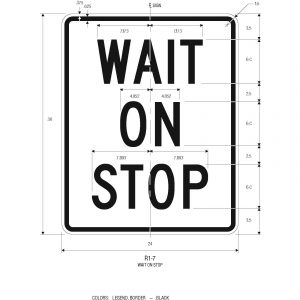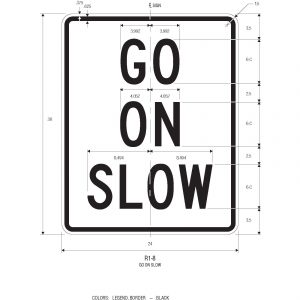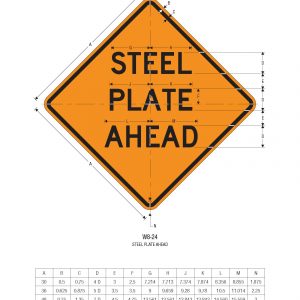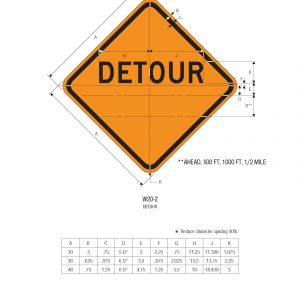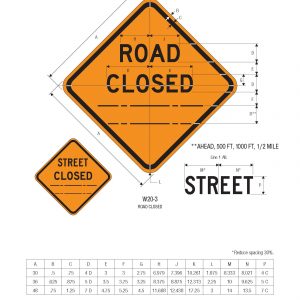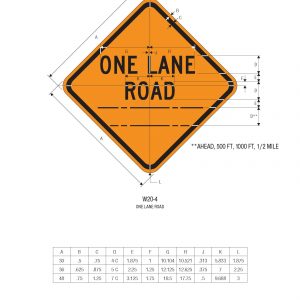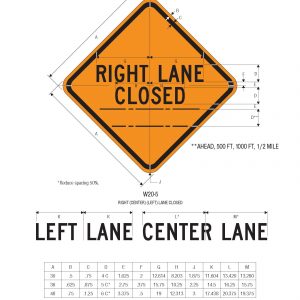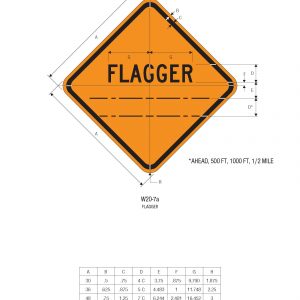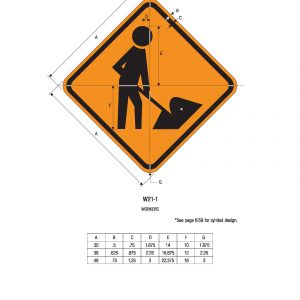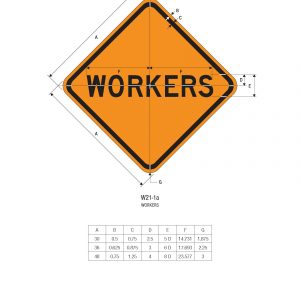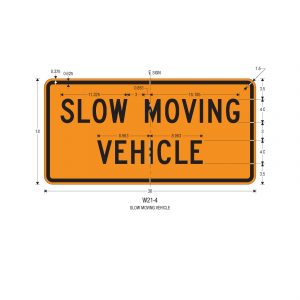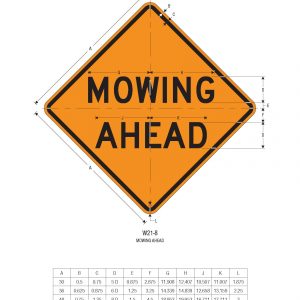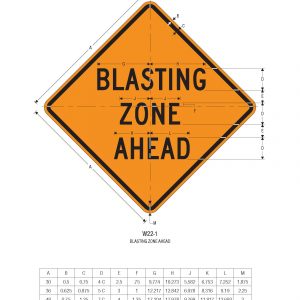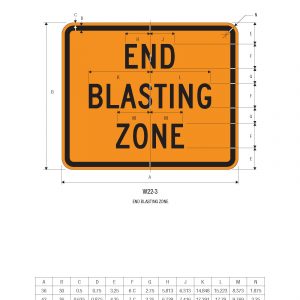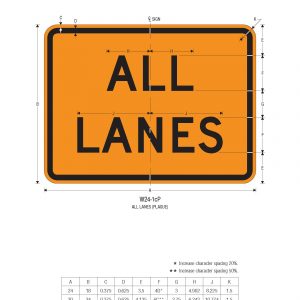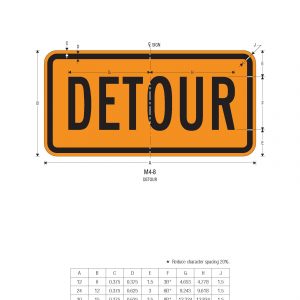Temporary Traffic Control Signs
Temporary traffic control signs are used for guiding motorists safely through work zones, or through an area where an incident is in progress.
Call (802) 223-8948 or click here to order online!
- R1-7 (Wait On Stop)
- R1-8 (Go On Slow)
- W8-24 (Steel Plate Ahead)
- W20-2 (Detour)
- W20-3 (Road Closed)
- W20-4 (One Lane Road)
- W20-5 (Right Lane Closed)
- W20-7a (Flagger)
- W21-1 (Workers)
- W21-1a (Workers)
- W21-4 (Slow Moving Vehicle)
- W21-8 (Mowing Ahead)
- W22-1 (Blasting Zone Ahead)
- W22-3 (End Blasting Zone)
- W24-1cP (All Lanes)
- G20-5aP (Work Zone)
- M4-8 (Detour)
Temporary traffic control signs are used for guiding motorists safely through work zones, or through an area where an incident is in progress. This type of signage can play a crucial role in maintaining steady transit flow when an incident, work zone, or some other type of event temporarily disrupts the normal flow of traffic.
Without temporary control indicators being used, there would undoubtedly be a great many more accidents involving drivers and pedestrians, primarily in work zones, on the nation’s highways. Temporary traffic control signs are colored with an orange background, with verbiage printed in black on the plaque for easy reading by drivers.
Unlike the traditional transportation indicators, there is a tremendous number of different types of temporary transit control signs due to the fact that there are so many different situations that need to be covered.
For instance, here is a sampling of the vast diversity of temporary traffic control signs you might encounter while driving:
- Road Work Ahead
- Be Prepared To Stop
- Utility Work Ahead
- Flagger Ahead
- Detour Ahead
- Lane Closed Ahead
- Road Closed Ahead
- Bump
- Construction Ahead
- Danger Overhead Power Lines
- Right Lane Closed Ahead
- Right Lane Closed
- Workers Ahead
- Shoulder Work Ahead
- Trucks Entering Highway
- Road Work, 500 FT
The Function of Temporary Traffic Control Signs
Temporary traffic control signs have the capability of conveying messages which are both general and specific by using words or symbols, with all of them falling into the same three categories as other indicators. These three categories are warning signs, guide signs, and regulatory signs, and the colors for each of these types follow the same guidelines as normal transport signs do.
For instance, warning indicators in temporary traffic zones will generally have a black legend on an orange background, and other types of temporary signs will follow the same guidelines for coloring as their permanent counterparts. Whenever any of these are intended for night use, they must be made of reflective material that has a smooth and sealed external surface.
Alternatively, they can be illuminated so that their shape and coloring are visible either during daylight or at nighttime, and this illumination can be either internal or external.
It is advisable to use flashing warning lights with these temporary control indicators, although the flashing lights must not interfere with the line of sight to the transit control sign itself. In most cases, temporary traffic control signs will be located on the right-hand side of any roadway, unless special attention is intended to be drawn to these, and in that case, they can be placed on both sides of the highway.
Temporary traffic control signs are generally mounted on portable supports within the roadway so that they can easily be taken down after their period of usage has expired. In some cases, to facilitate ease of maintenance and mobility, large temporary traffic control signs are mounted on maintenance vehicles, which are positioned in advance of the work zones. It is also possible to mount temporary traffic control signs on roadside trailers, which facilitates portability and ease of take down.
Importance of Temporary Traffic Control Signs
The importance of temporary traffic control signs can hardly be overstated, as they provide tremendous value to any community where they are routinely used. The first factor, which is probably the most obvious one about using such signs, is the safety factor. Every year a significant number of crashes occur in work zones, resulting in fatalities and several injuries both to motorists and workers in those zones. By helping to regulate transit and guide the drivers of vehicles through work zones efficiently, temporary traffic control signs serve a significant purpose in helping to maintain safe driving standards.
It’s also very important for any community to use these indicators to protect itself from the possibility of litigation. If it can be demonstrated that a particular agency was negligent in failing to identify temporary traffic situations in a work zone, legal action might conceivably be taken against a particular governmental organization. Anything that can be done to minimize liability to a local government or community should be done in the way of using temporary traffic control signs.
Lastly, using these types of indicators is simply a matter of public trust, because any community should be aware of, and should accept the responsibility of providing for its citizens. It is always the responsibility of a public agency or official having jurisdiction to design, place, operate and maintain such transit controls as are necessary for maintaining safe transportation flow. While this responsibility may be temporarily transferred to others such as contractors, the ultimate responsibility for providing these safeguards for the entire community, will always rest with the appropriate governmental agency.

